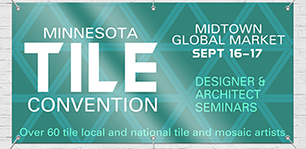Designing Banners
At eSigns, you can create custom signs on any desktop computer, then upload your file for us to print. We prefer a 150-300 dpi PSD, PDF, EPS, AI, JPG or TIFF, but will accept virtually any file for review.
If you choose to submit your own artwork, you'll need to set the file up in a way that will translate well to the size you have selected. Choosing a horizontal banner, for example, then providing a vertical layout will result in sizing problems when we print your custom sign.
Your page size must be proportional to your size. For example, when ordering a 3'x8' Banner, you can set your page horizontally as 36"H x 96"W (3' = 36" and 8'=96"). If the program you are using will not allow you to make a page that big, you can scale your page to 10% and make your page size 3.6" tall and 9.6" wide.
Starting with the right page size or proportion will help ensure that your custom signs will look like the layout you send to us. When designing a custom layout, allow 1" extra on the top and bottom for the hem and grommets.
Setting the page size:
- PowerPoint users: Go to File, then Page Setup. Choose "Custom Page Size" from and enter your dimensions.
- Microsoft Publisher users: Choose "Custom Page" from the catalog (located at the bottom) and enter your custom sign size when you create a new document.
- Microsoft Word users: Click on Page Setup, then enter your custom sign size. Click on the Margins tab and enter the same margin for all sides.
- Other Programs: As a rule you can change the page size from within your page setup tab. There are limitations in some programs of the maximum page size, so just remember to use a size that is easy to resize up for your custom sign.
If you cannot locate the page set-up in your program, you can draw a rectangle inside the page to define your sign's boundaries.
Now it's time to start your layout. Choose only one or two fonts for your message. Choosing two fonts that compliment each other can make your sign stand out. Use fonts that are clearly legible from a distance, and try to avoid fancy fonts as they are more difficult to read. You can read our Effective Sign Design tips for more information on fonts, color and sizing.
When adding graphics and pictures, the quality of your images is very important. When your custom sign is created, they will be blown up in size and can look blurry or pixilated. Selecting hi-resolution photos or quality pictures to begin with will make your custom sign look its best. As a rule, pictures you find on the internet have a low resolution that will not work well on printed signs. If using your own digital photography, put your camera on a hi-resolution setting.
Many programs come with stock clip art and pictures. This type of art is broken down into 2 categories — Vector Art and Raster Art.
Vector art doesn't depend on resolution, so it can be used at any size without losing quality. Vector art is usually in eps or wmf format.
Raster art is resolution-dependent such as photographs that can also be used on your printed custom sign, but it is important to use higher-resolution photos. A small graphic will not look very good when it is used at a size that is too big. Common raster formats are jpg, tif and gif files.
Adding art:
Microsoft users: When inserting art from Microsoft's clip art library, photographs are raster art and should be used at smaller sizes. Pictures that have distinct colors and outlines (and just don't look like photographs) are usually wmf files and can be used at any size.
Once your design is done, you will need to save it in a format that eSigns can use. You can use a PDF printer (these are free & can be found online) to save it as a pdf, or your program may allow you to export your graphic in pdf format.
When you have saved your file there is one more step before uploading your custom sign layout to eSigns.com. In order to make sure your file looks the same on our computers as your computer, we require a jpg proof uploaded with every custom sign layout file. This does not have to be a hi-resolution file and will not be used for printing. It tells us what you expect your custom sign to look like when it is done. We use this to compare the file you sent to what appears on our computer, and will contact you if the custom sign file you submitted does not match the jpg proof.
Making a jpg for proof:
- Onscreen, resize the window so you can view your whole graphic. Move your pointer out of the area of the graphic.
- Push "Print Screen" on your keyboard.
- Go to the Start Menu, then to Accessories, then to Paint.
- When Paint has opened, from the Edit Menu, select Paste.
- From the File Menu, select Save As… and choose the jpg format.
- Name the file adding the word PROOF (ie, banner-PROOF.jpg)
- Save
These tips will help you get the best results from your file when you upload a custom sign layout to eSigns. While we try to use any file submitted to us, there are times that we cannot. If we can't use your file to print a custom sign, a representative will contact you with options that can allow your project to continue.

